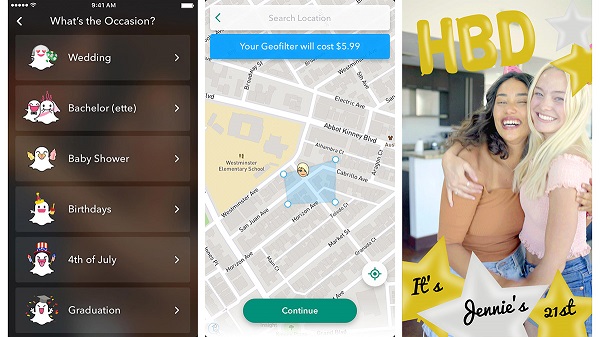Mindstream Media Group is very excited about becoming a certified Snapchat partner. We’re looking forward to leveraging the platform’s projected user growth and its ability to capture differentiated audiences not found on Facebook and YouTube. While it may be early on in our partnership, we’re already seeing the benefits of Snapchat advertising and are excited to share these capabilities with our advertisers.
If your brand is still lukewarm on (or unfamiliar with) Snapchat’s advertising potential, here are five reasons why we’re bullish on the platform. (Consider this your official invitation to join us on the Snapchat advertising bandwagon.)
No. 1: Snapchat’s growing access to unique audiences
On average, 188 million people around the world use Snapchat daily including many audiences not found on other top social platforms. According to Snapchat, in a given week:
- 27 percent of Snapchatters aren’t on Facebook.
- 33 percent of Snapchatters can’t be found on Instagram.
- 46 percent of Snapchatters won’t visit Youtube.
In 2018, Snapchat is projected to have 85 million monthly active users in the U.S. alone, up more than 7 percent over last year, according to eMarketer. By eMarketer’s estimates, Snapchat will grow faster than both Facebook and Twitter, which will see user counts increase less than 1 percent this year.
No. 2: Snapchat’s access to younger audiences
Snapchat is an incredible tool for reaching younger, emerging markets. According to eMarketer, 16.4 million teens in the U.S. will use Snapchat this year. That’s almost two-thirds of all teens and close to 5 million more teen users than Facebook and 3.6 million more than Instagram.
These numbers are expected to get even better for Snapchat. eMarketer estimates Snapchat will add 1.2 million U.S. users in the 12 to 17 age group by 2022, while Facebook is projected to lose 2.2 million during that time frame.
No. 3: Users are increasingly using Snapchat while making purchases
Snapchat users are very engaged and often use the platform throughout purchase processes, which is very advantageous for advertisers. Consider the following stats from Snapchat:
- 33 percent of users post to their Snap story after purchasing a product.
- 35 percent of users send Snaps of where they are shopping.
- 60 percent of Snap Ads are watched with the audio on.
Based on these stats, we see users’ affinity for self-identifying what they buy while highlighting the retail locations where they made those purchases.
No. 4: Snapchat’s expanding advertising capabilities
Among social media platforms, competition is getting fierce when it comes to advertising capabilities. Snapchat’s steadily increasing advertising opportunities are a major driver of this competition. Top social media platforms like Facebook, Instagram and Twitter are fighting like hell to keep up with the more nascent Snapchat.
For example, Snapchat announced an Offline Conversions Pilot in early October for advertisers who have data from offline conversions that can’t be tracked through an online site in real time. Through the pilot, advertisers are able to send offline match data to attribute those sales to Snapchat campaigns via the return on advertising spend (ROAS) field in Ads Manager. This is great news for agencies as tracking offline conversion activity is paramount for attribution models and calculating ROAS.
For another example, Snapchat rolled out its programmatic ad platform in June 2017. The transition to a self-serve ad format has increased the number of advertisers and resulted in lower ad prices overall compared to their managed service.
No. 5: Early success with Snapchat advertising
The last reason we’re excited about Snapchat advertising that we’ll share today is based on our actual experience with the platform. Recently, we began running a campaign for a retail photography studio. The campaign has delivered a high volume of swipe ups on prospecting, look-a-like and customer relationship marketing (CRM) based audience segments.
By using Snapchat’s advertising platform and optimizing the campaign based on ongoing performance, we saw:
- Low cost-per-thousand-impression (CPM) totals.
- Twice as efficient cost per acquisition (CPA) totals than other platforms.
- 21 percent more efficient cost per swipe ups (CPSU) on look-a-like campaigns compared to prospecting.
Given these numbers, we’re very bullish on Snapchat’s ability to help us deliver the business results that matter most for our clients. As an added bonus, Snapchat also provides a terrific outlet for showcasing brand creative.
Follow us on Snapchat!

If you want to start incorporating Snapchat into your digital strategy, contact our digital media experts for help.



